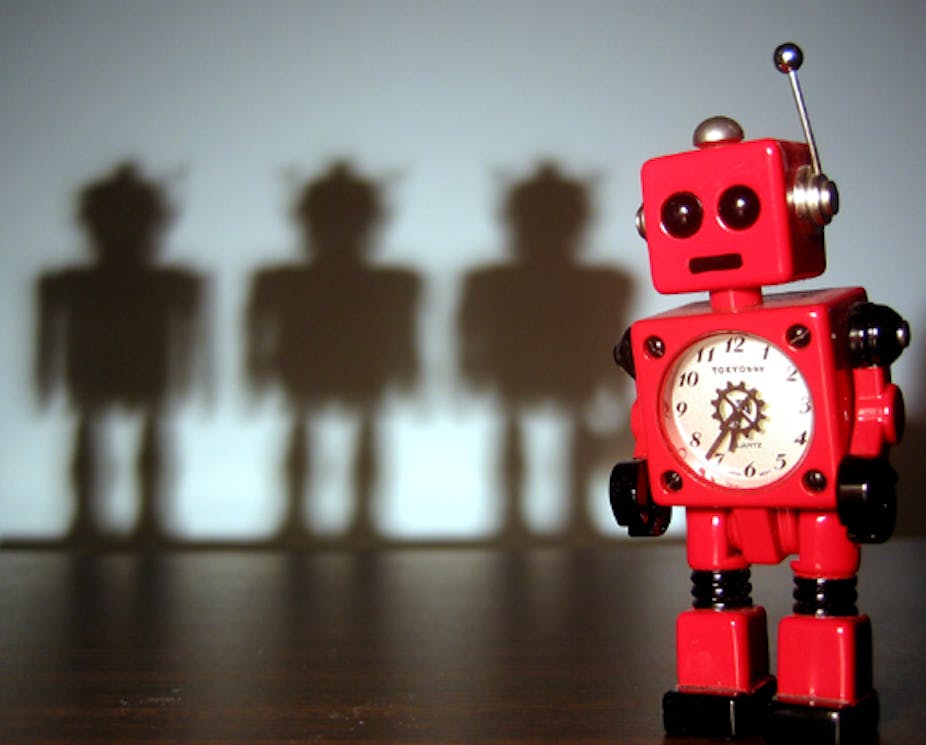Jobs, or more accurately, not having a job, has been in the news this week.
The Foundation of Young Australians released a report claiming that 40% of all Australian jobs would be at high risk of being automated within the next 10 to 15 years. That figure actually comes from a report by the Committee for Economic Development of Australia which gives the same figure that 40% of jobs have a moderate to high likelihood of being automated in the next 10 to 15 years. Their estimate is in turn based on a paper authored by two Oxford academics Frey and Osborne who first estimated the probability of jobs being automated in the US.
Frey and Osborne essentially created a model for jobs that looked at how much the job relied on perception and manipulation, creative intelligence and social intelligence. They then simply asked the question as to whether the technology would exist in 10 to 15 years time to create software and hardware the could be used to automate the particular mix of skills needed in any given job.
At no point did they say that this actually would happen or even that anyone would want it to happen. Frey and Osborne even suggested reasons why this might never actually happen, including public and political opposition to automation being implemented.
It is important to realise that the methodology in this paper has never been validated with any actual evidence to demonstrate that it can predict the future of automation.
However, this has not stopped a series of reports being published to argue that the future looks bleak for children studying at school today unless they are all re-trained in IT skills.
But maybe the jobs kids will be doing haven’t been invented?
It doesn’t actually take much for predictions about the future to be accepted as having some credible basis. Another favourite prediction is the quote that:
65% of today’s grade school kids will end up at jobs that haven’t been invented yet.
Again, this quote is attributed to a report called “Futurework - Trends and Challenges for Work in the 21st Century” by the US Department of Labor. The report was actually published in 1999 although the quote is always made as if it was current. Clearly if the US Department of Labor had set a timescale of 10 to 15 years for this prediction, they would have been completely wrong.
Fortunately they weren’t wrong because the report actually doesn’t make this claim at all and so it is not clear where the quote comes from. Of course the report does say that the nature of work will change and that the more educated and skilled an employee, the more likely it is that they will find work and be able to re-skill into a job with different responsibilities.
Future-gazing as science fiction
The trouble with predicting the future is that the more dramatic the prediction the more likely the media will pick it up and amplify it in the social media-fed echo chamber. What is far less likely to be reported are the predictions that emphasise that it is unlikely that things will change that radically because the of the massive inertia that is built into industry, governments and the general workers’ appetite for change.
Economists at the OECD may have another explanation for why it is unwise to equate the fact that something “could” be done with the fact that it “will” be done. In a report on the future of productivity, the authors detail how it is only a small number of “frontier companies” have manged to implement changes to achieve high levels of productivity growth. The companies that haven’t achieved anywhere near the same productivity growth are the “non-frontier companies” or simply “laggards”. The reasons for this are probably many but lack of leadership, vision, skills or ability may factor into it.
The point is that since 2000 many companies didn’t adopt technology and change their business processes to see improvements in productivity even though they clearly “could” have done.
Even if we assume that there will be greater automation in some jobs in the next 15 years, it is still not clear what impact that will have on the total number of jobs available in the most affected sectors. Researchers who have looked for a relationship between the number of robots used in a country and total number of jobs in the manufacturing industry could not find one. For example, Germany lost fewer manufacturing jobs than the US and have deployed a far greater number of manufacturing robots.
It is easy to cast robots as the villain of the piece ready to take our jobs and even, if some predictions are to be believed, our lives. Ironically, humanity may need the help of the robots to actually get this to happen any time soon, as we are unlikely to be capable of doing it by ourselves.

